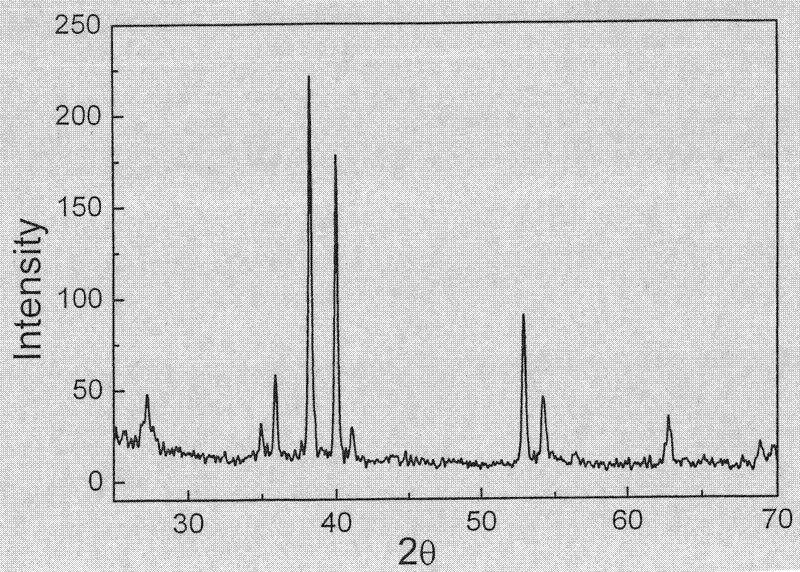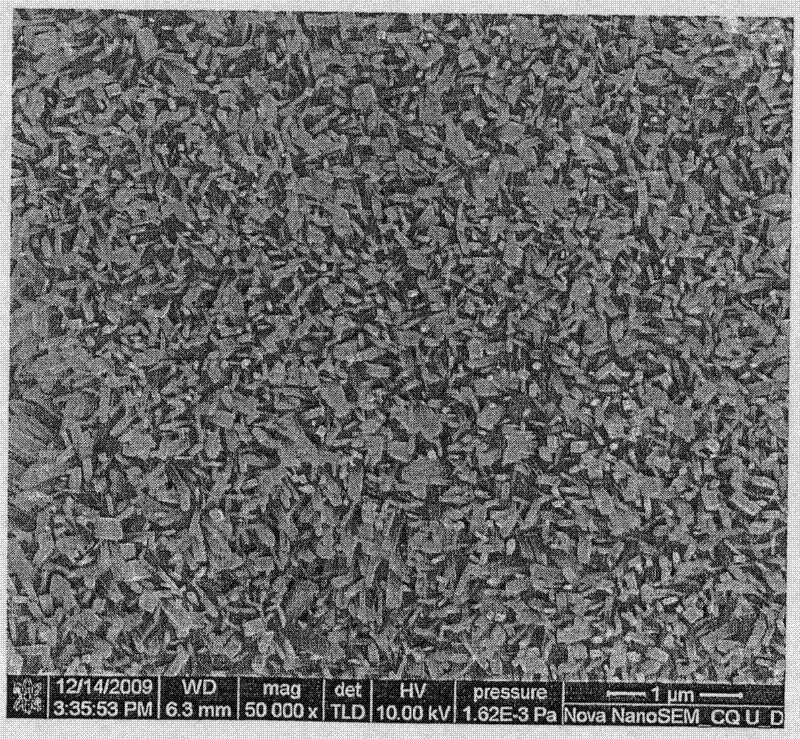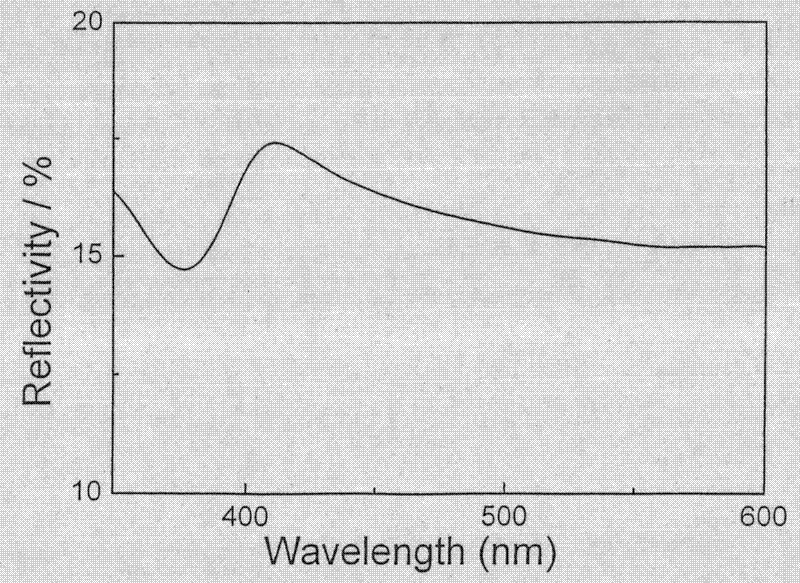Method for preparing titanium dioxide nano-rod array materials at low temperature
A nanorod array, titanium dioxide technology, applied in the direction of titanium dioxide, titanium oxide/hydroxide, metal material coating technology, etc., can solve the problems of use, complex process surfactant addition, etc., achieve less environmental pollution, easy monitoring and control, product cleanliness
- Summary
- Abstract
- Description
- Claims
- Application Information
AI Technical Summary
Problems solved by technology
Method used
Image
Examples
Embodiment 1
[0031] Specific synthesis method of low-temperature titania nanorod arrays
[0032] The raw material for synthesizing titanium dioxide nanorod array material is hydrochloric acid (HCl), the reaction that titanium substrate (Ti) takes place is as follows:
[0033] Ti+4HCl→TiCl 4 +2H 2 ,
[0034] TiCl 4 +3H 2 O→H 2 TiO 3 ↓+4HCl,
[0035]
[0036] The specific operation steps are as follows:
[0037] Step 1, cleaning of the titanium substrate, the titanium substrate is ultrasonicated for 10 minutes in a mixed solution of alcohol and acetone with a volume ratio of 1:1, and rinsed with deionized water;
[0038] Step 2, remove the oxide layer of the titanium substrate, put the titanium substrate in 7% hydrochloric acid solution, heat it at 95°C in a water bath heater for 10 minutes, rinse it with deionized water, and finally dry it for use;
[0039] Step 3, preparing a reaction solvent, dissolving hydrochloric acid in an appropriate amount of water, and controlling the c...
Embodiment 2
[0042] Specific synthesis method of low-temperature titania nanorod arrays
[0043] The raw material for synthesizing titanium dioxide nanorod array material is hydrochloric acid (HCl), the reaction that titanium substrate (Ti) takes place is as follows:
[0044] Ti+4HCl→TiCl 4 +2H 2 ,
[0045] TiCl 4 +3H 2 O→H 2 TiO 3 ↓+4HCl,
[0046]
[0047] The specific operation steps are as follows:
[0048] Step 1, cleaning of the titanium substrate, the titanium substrate is ultrasonicated for 10 minutes in a mixed solution of alcohol and acetone with a volume ratio of 1:1, and rinsed with deionized water;
[0049] Step 2, remove the oxide layer of the titanium substrate, put the titanium substrate into 18% hydrochloric acid solution, heat it at 65°C in a water bath heater for 10 minutes, rinse it with deionized water, and finally dry it for use;
[0050] Step 3, preparing a reaction solvent, dissolving hydrochloric acid in an appropriate amount of water, and controlling th...
Embodiment 3
[0053] Specific synthesis method of low-temperature titania nanorod arrays
[0054] The raw material for synthesizing titanium dioxide nanorod array material is hydrochloric acid (HCl), the reaction that titanium substrate (Ti) takes place is as follows:
[0055] Ti+4HCl→TiCl 4 +2H 2 ,
[0056] TiCl 4 +3H 2 O→H 2 TiO 3 ↓+4HCl,
[0057]
[0058] The specific operation steps are as follows:
[0059] Step 1, cleaning of the titanium substrate, the titanium substrate is ultrasonicated for 10 minutes in a mixed solution of alcohol and acetone with a volume ratio of 1:1, and rinsed with deionized water;
[0060] Step 2, remove the oxide layer of the titanium substrate, put the titanium substrate into 10% hydrochloric acid solution, heat it at 80°C in a water bath heater for 10 minutes, rinse it with deionized water, and finally dry it for use;
[0061] Step 3, preparing a reaction solvent, dissolving hydrochloric acid in an appropriate amount of water, and controlling the ...
PUM
| Property | Measurement | Unit |
|---|---|---|
| length | aaaaa | aaaaa |
| diameter | aaaaa | aaaaa |
Abstract
Description
Claims
Application Information
 Login to View More
Login to View More - R&D
- Intellectual Property
- Life Sciences
- Materials
- Tech Scout
- Unparalleled Data Quality
- Higher Quality Content
- 60% Fewer Hallucinations
Browse by: Latest US Patents, China's latest patents, Technical Efficacy Thesaurus, Application Domain, Technology Topic, Popular Technical Reports.
© 2025 PatSnap. All rights reserved.Legal|Privacy policy|Modern Slavery Act Transparency Statement|Sitemap|About US| Contact US: help@patsnap.com



